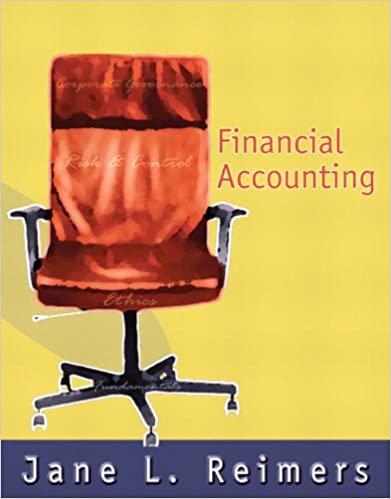Below are 2 questions. I have figured out how to calculate the answers, but I don't understand what the differences are between the 2 questions.
Below are 2 questions. I have figured out how to calculate the answers, but I don't understand what the differences are between the 2 questions. The first question (Deere and Co) seems to be asking about 2016 ONLY, not the total tax savings caused by LIFO from 2015-2016 which the correct answer indicates. The 2nd question (GE) is asking as of 2016 year end, which seems to be asking that you include the years prior to 2016, i.e. "As of 2016 year end meaning everything prior that is listed" in the answer, but the correct answer only considers 2016. Can an expert explain to me how I can tell what is actually being asked so I don't get these wrong an an exam? Maybe a trick on how to decipher whether the question is actually asking for the difference in savings between the 2 years or only the savings that year. Thanks so much.
QUESTION 1:
Assume the following inventory footnote was obtained from the Deere & Company's 2016 10-K follows ($ millions). Inventories Most inventories owned by Deere & Company and its United States equipment subsidiaries are valued at cost, on the last-in, first-out (LIFO) basis. Remaining inventories are generally valued at the lower of cost, on the first-in, first-out (FIFO) basis, or market. The value of gross inventories on the LIFO basis represented 61 percent of worldwide gross inventories at FIFO value on October 31, 2016 and 2015, respectively. If all inventories had been valued on a FIFO basis, estimated inventories by major classification at October 31 in millions of dollars would have been as follows:
| 2016 | 2015 | |
|---|---|---|
| Raw materials and supplies | $716 | $589 |
| Work-in-process | 425 | 408 |
| Finished machine and parts | 2,126 | 2,004 |
| Total FIFO value | 3,267 | 3,001 |
| Less adjustment to LIFO value | 1,132 | 1,002 |
| Inventories | $2,135 | $1,999 |
We notice that not all of Deere's inventories are reported using the same inventory costing method (companies can use different inventory costing methods for different inventory pools). What effect has the use of LIFO inventory costing had on Deere's tax liability for 2016 only (assume a 35% income tax rate)?
Select one:
A. $130 million tax savings
B. $ 45.5 million tax savings
C. $396 million tax savings
D. $ 85 million tax savings
QUESTION 2:
Assume General Electric Company reports the following footnote in its 10-K report.
| December 31 (In millions) | 2016 | 2015 |
|---|---|---|
| Raw materials and work in process | $5,527 | $5,042 |
| Finished goods | 5,152 | 4,806 |
| Unbilled shipments | 333 | 402 |
| 11,012 | 10,250 | |
| Less revaluation to LIFO | (697) | (661) |
| $10,315 | $9,589 |
The company reports its inventories using the LIFO inventory costing method. Assume GE has a 35% income tax rate. As of the 2016 year-end, how much has GE saved in taxes by choosing LIFO over FIFO method for costing inventory?
Select one:
A. $3,610 million
B. $ 244 million
C. $6,705 million
D. $ 475 million
Step by Step Solution
There are 3 Steps involved in it
Step: 1

See step-by-step solutions with expert insights and AI powered tools for academic success
Step: 2

Step: 3

Ace Your Homework with AI
Get the answers you need in no time with our AI-driven, step-by-step assistance
Get Started


